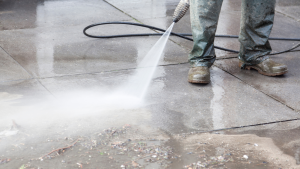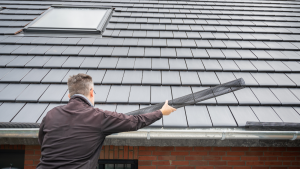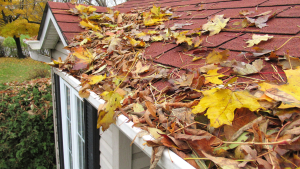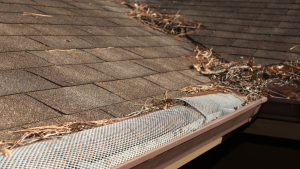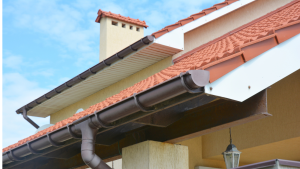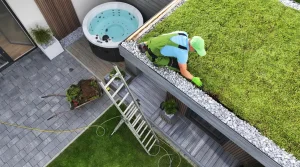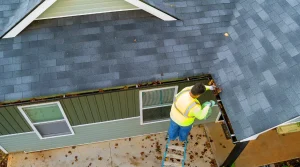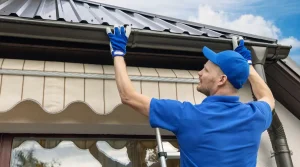Gutters are essential to your home’s exterior, channelling To avoid damage, keep water away from your foundation and roof Regular gutter inspection is crucial to maintaining the integrity of your home. This guide will cover the standards for gutters, proper gutter installation, how to inspect gutters from the ground, and the importance of regular inspections.
At Bergen County Gutter Power Washing, we value your feedback. That’s why we follow up on every completed task with a customer survey. We are committed to maintaining a positive reputation, which demonstrates our honesty and expertise—qualities we believe our customers recognize in our firm. With nearly 50 years in the business and an A+ rating with the BBB, our dedication to quality and service is evident.
For a free quote or more information about gutter cleaning or any of our other services, call (201) 552-4990. We encourage you to ask us the four questions listed above, and we look forward to providing customized responses tailored to your property. Contact us today!
What Are the Standards for Gutters?
Several factors determine the standards for gutters, including material, size, slope, and placement. Common materials include aluminium, copper, steel, and vinyl, each with benefits and lifespan.
- Material: Aluminum is popular due to its resistance to rust and lightweight nature. Copper offers durability and aesthetic appeal, while vinyl is budget-friendly but less durable.
- Size and Shape: Gutters typically come in sizes of 5 inches or 6 inches and in shapes such as K-style or half-round. Your size should be based on the rainfall in your area and the size of your roof.
- Slope: Gutters must be sloped properly to ensure water flows towards the downspouts. A general rule of thumb is a slope of 1/4 inch for every 10 feet of gutter.
- Placement: Installing gutters around the border of your roofline, extending slightly beyond the roof to catch water runoff effectively.
What Is Proper Gutter Installation?
Proper gutter installation involves several critical steps to ensure adequate water drainage and longevity:
- Measurement and Planning: Based on the size and slope of the roof, measure the length of your roofline to calculate the required number of downspouts.
- Securing the Gutters: Gutters should be securely attached Using brackets or hangers, to the fascia board spaced no more than 3 feet apart to prevent sagging.
- Ensuring Proper Slope: As mentioned earlier, a slope one-fourth of an inch every ten feet of gutter is necessary to ensure water flows toward the downspouts.
- Sealing Joints and Seams: Use a high-quality sealant to seal joints and seams, preventing leaks and ensuring a watertight system.
- Installing Downspouts: Downspouts should be placed at the proper times to guarantee effective water movement away from the foundation.
How to Inspect Gutters from the Ground
Inspecting gutters from the groundmay be completed safely and successfully with the appropriate equipment and methods:
- Visual Inspection: Use binoculars to inspect the gutters for obvious indications of trash, sagging, or damage buildup. Look for sections that may be pulling away from the house or showing signs of rust and corrosion.
- Check for Water Flow: During or after a As it rains, watch how the water moves through the gutters. and downspouts. Look for overflow, which can indicate blockages or improper slope.
- Inspect for Debris: Check for dirt, branches, and other material that may have gathered in the gutters. Excessive debris can cause blockages and impede water flow.
Check Your Gutters Frequently for Wear, Corrosion, and Damage
Regular gutter inspections are vital to maintaining their functionality. Look for:
- Wear and Tear: Gutter wear and tear can occur over time deteriorate. Inspect for holes, cracks, and rust spots.
- Corrosion: Gutters made of metal are prone to corrosion and rust. Continually look for and treat any indications of rust to prevent further damage.
- Physical Damage: Severe weather, falling branches, and other physical impacts can damage gutters. Look for dents, bending, or sections detached from the house.
Early Identification Allows for Timely Repairs, Preventing More Extensive Issues Down the Line
Identifying and addressing gutter issues early can prevent costly repairs in the future. Timely maintenance can also prevent water damage to your roof, walls, and foundation, preserving your home’s structural integrity. Regular maintenance and prompt repairs also extend the lifespan of your gutters, providing long-term protection for your property.
FAQ Guter Inspection
Q: How often should I inspect my gutters?
A: It’s recommended to inspect your gutterstimes a year at the very least, ideally in the spring and fall. Additionally, they should be checked after any significant storm or severe weather event.
Q: Can I inspect my gutters without climbing a ladder?
A: You can perform a preliminary inspection from the ground using binoculars. However, you may need a ladder or hire a professional for a more thorough inspection.
Q: What tools do I need for gutter inspection?
A: Binoculars for ground inspection, a sturdy ladder for close-up inspection, a garden hose to check water flow, and gloves to remove debris.
Q: What are the signs that my gutters need replacement?
A: Significant rust, cracks, holes, and sagging that cannot be repaired are signs that your gutters may need to be replaced. If you frequently find water pooling around your foundation, it may also indicate the need for new gutters.
Q: Can clogged gutters cause roof damage?
A: Water damage may result from clogged gutters causing water to back up and pour onto the roof. leaks, and potential rot.


